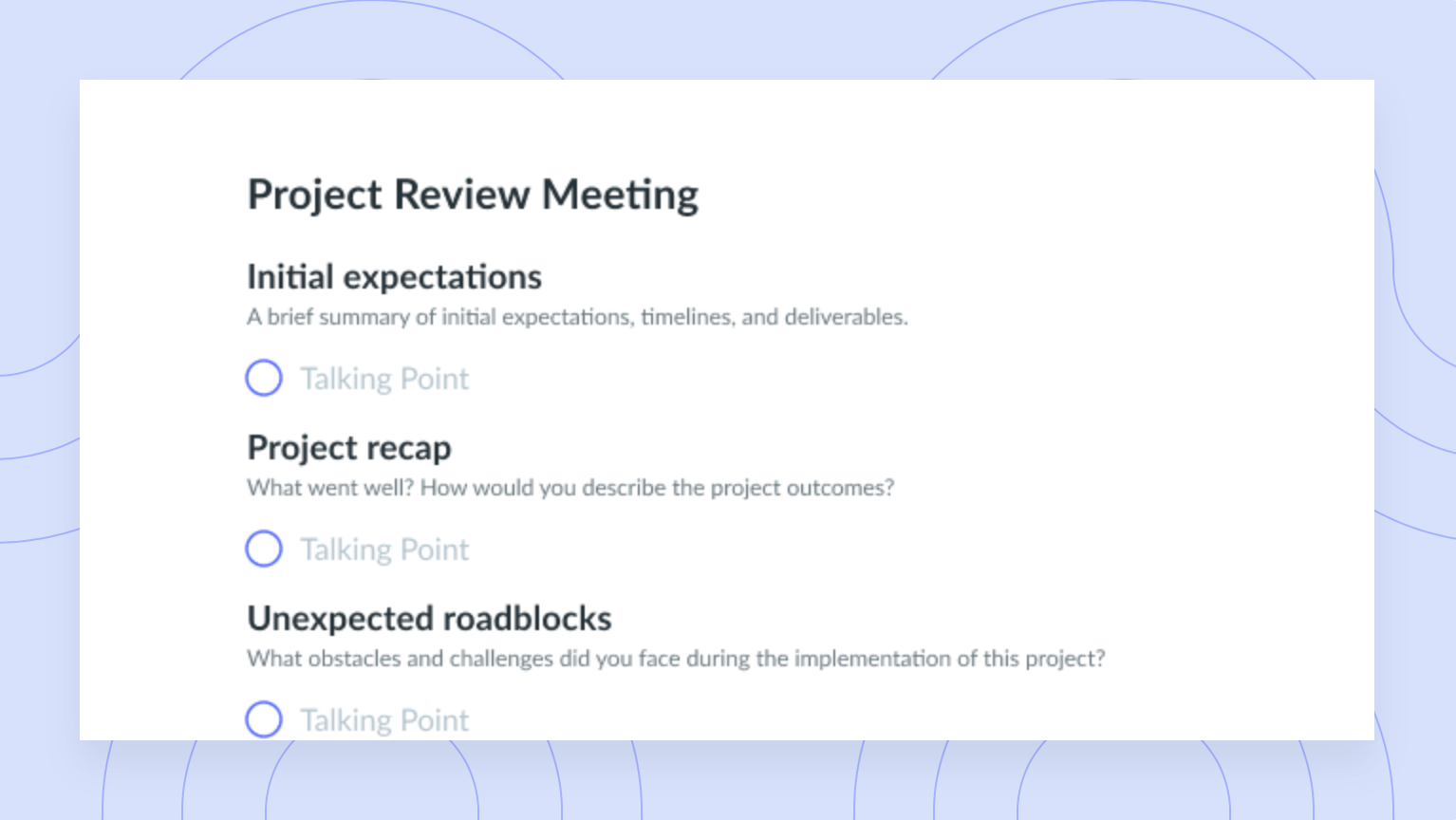
Project Retrospective Meeting Agenda Template
Get this templateHelp your team reflect on the learnings, challenges, and outcomes of a completed project.


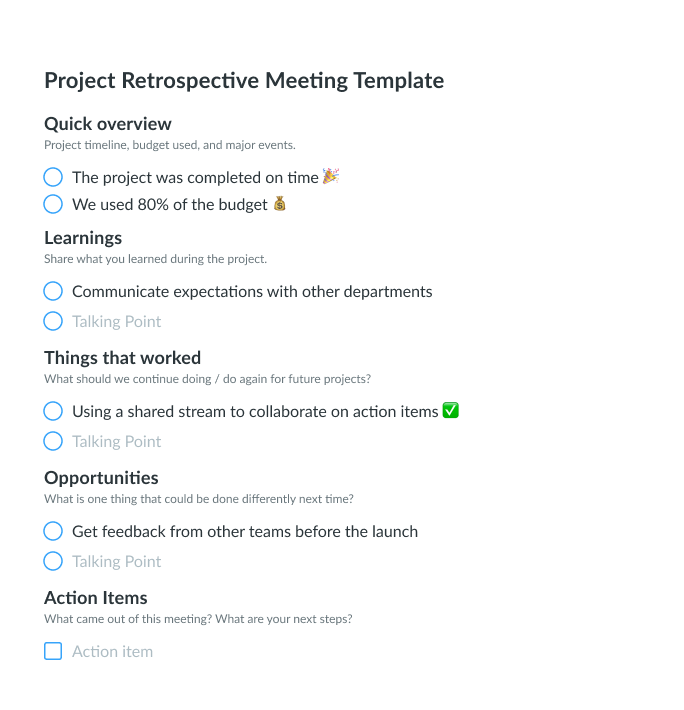

The purpose of a Project Retrospective meeting is to dedicate some time to revise a completed project. This retrospection allows you and your team to learn from successes, short-comings and to innovate an approach to move forward and seek improvement for future projects.
Fellow has created a Project Retrospective Meeting template to assist you with the structure and content to facilitate this valuable meeting. This Project Retrospective Meeting template provides a great opportunity to establish real changes for continuous improvement, which will motivate you and your team.
“You can conduct a retrospective at any point in a project. If you practice agile principles, then you probably incorporate retrospectives after every couple of iterations (or sprints). However, everyone would benefit from a postmortem, or post-project retrospective, regardless of your specific design and development methodology.”
– Victor Yocco, author of Design for the Mind
What’s inside this project retrospective meeting template:
1 Project Overview:
It is important to begin your Project Retrospective meeting with a high- scale overview of the project timeline, the budget used and any major events that took place. Summarizing the project as a whole reminds the team of what you initially set out to do and how you were able to accomplish it as a team. In this section of your Project Retrospective Meeting Agenda, it is valuable to share factual information about the projects execution and outcome in a completely objective manner. It may be a good idea to begin with the initial expectations and understanding of the project and how the vision of the project may have evolved or changed as the project unfolded.
Project retrospectives are better in Fellow
Fellow is the meeting management app that companies like Shopify, Uber, and KeepTruckin use to run project retrospectives.
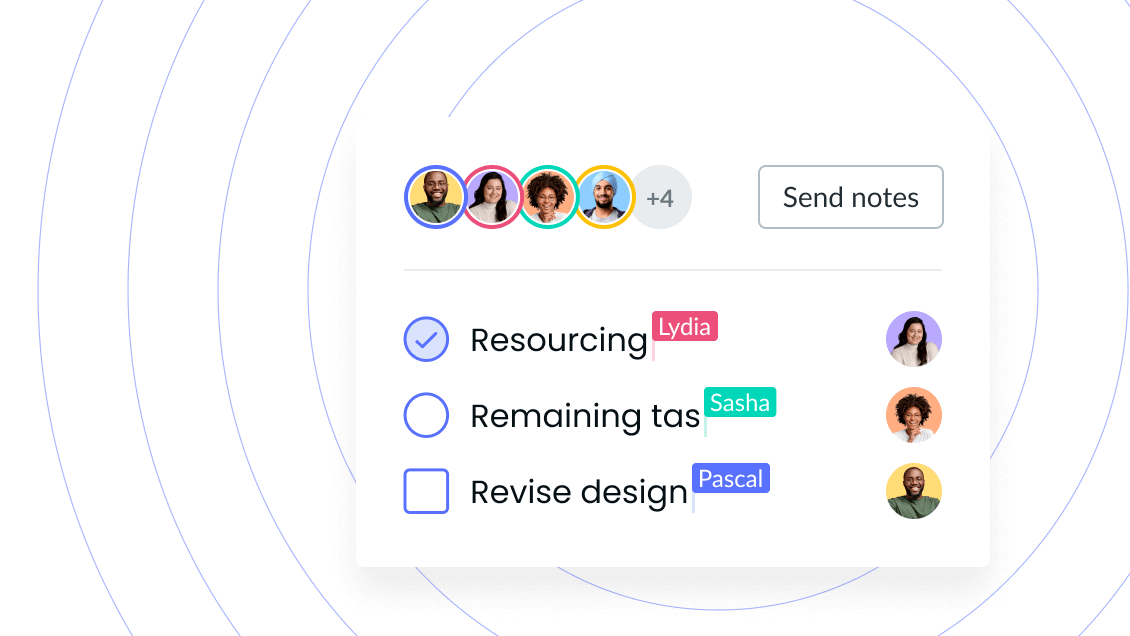
2 Learnings:
No matter the outcome of a project, there is always something to learn from the experience. In spending time on the project learnings, you are fostering a continuous learning environment for your team. It is also making it clear that perfect execution isn’t possible and that there is always room for growth and improvement.
The Learnings component of your Project Retrospective Meeting Template is a great opportunity for your team members to share something that they have learned while completing this project. There is a strong likelihood for collaboration and connections over mutual learnings, which will bring the team together even more. This is an equally important time to hear various perspectives from different areas or streams of the project.
Smashing Magazine furthers this point by articulating, “You are prioritizing growth and learning over pushing out a product and moving on to the next challenge. Team morale and performance improve when you reflect these.”
– Victor Yocco
3 What worked?
Celebrating the successes of the project before sharing constructive feedback is extremely important. A lot of time and hard work went into this project, which needs to be recognized by giving thanks to everyone who made the execution possible.
Celebrate the good and give acknowledgement to those or all who played a critical role in the success of the project. Encouraging project retrospective questions such as, “what should we continue doing?” or “what should we do again for future projects?” will harness a productive conversation with your group.
“Describe the factors that contributed to those successes. Instead of just describing the successes the project has had, it’s more valuable to state the factors that contribute to these successes so that similar projects can repeat the successes.”
– Visual Paradigm
Asking your teammates to share positive feedback with each other is a way to add value to this section of your project retrospective meeting agenda.
4 Opportunities for improvement:
Seeing as it will always be valuable to conduct project retrospective meetings, it is a great idea moving forwards for your team members to keep logs or make notes to keep track of learnings, what is going well, and what could use some improvement as the project evolves.
In this section of your project retrospective meeting template, discuss the project challenges that were not under control of the project team, that affected the project negatively. Discuss these factors and ensure to take note of the major challenges you and your team faced.
Next, talk about any project shortcomings that were caused due to tasks or decisions that were carried out poorly. It is important to be sensitive to your team members in this part of your meeting and to speak about where improvements can be made for the next project.
Ensure that no one is being singled out and that you are being conscious, respectful and sensitive towards your team members. Encourage your team members to speak-up and collaborate on this.
5 Action Items:
Your action items should be as specific as possible to ensure that real change is possible. Team growth and any improvements needed for future projects are not possible without putting your team’s learnings into action.
While creating these action items, be sure that these changes are realistic, feasible and are clear. Ensure you have also devised a plan of how to execute these action items. Facilitate an open discussion in this final section of your project retrospective meeting agenda and ensure that your group feels as if they have all of the insight, tools and resources necessary to successfully execute the action items created.
Seeing change in future projects will be the ultimate measure of your project retrospective meetings’ success.
In concluding your Project Retrospective Meeting, Smashing Magazine highlights:
“Any issues should have solutions identified. No one should leave the retrospective feeling they didn’t have a chance to participate fully. No issue should be left unresolved, or at least not without a concrete timeline for you to come back to address it.”
You and your team should feel as if you’ve put all of your thoughts and insights on the table and that your ideas and opinions have been heard. The purpose of this meeting is to improve the quality and the way in which future projects are completed, essentially making the execution less complex as the team learns how to avoid any shortcomings and challenges.
In acknowledging learnings and what was done well, you and your team will continue to implement these successes together. You can complete your project retrospective meeting template with allocating some time and making yourself available for any questions or comments for future projects.

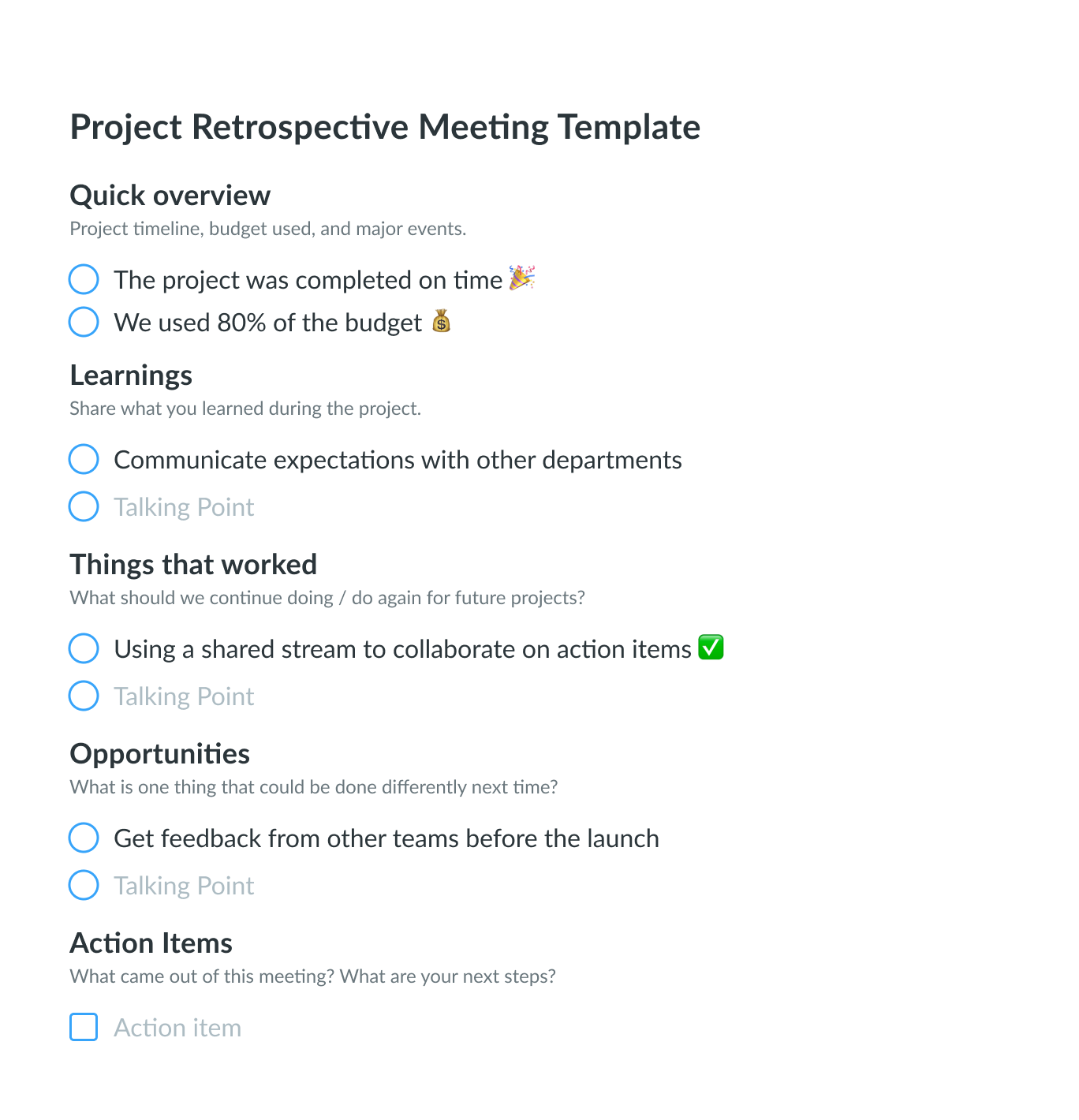







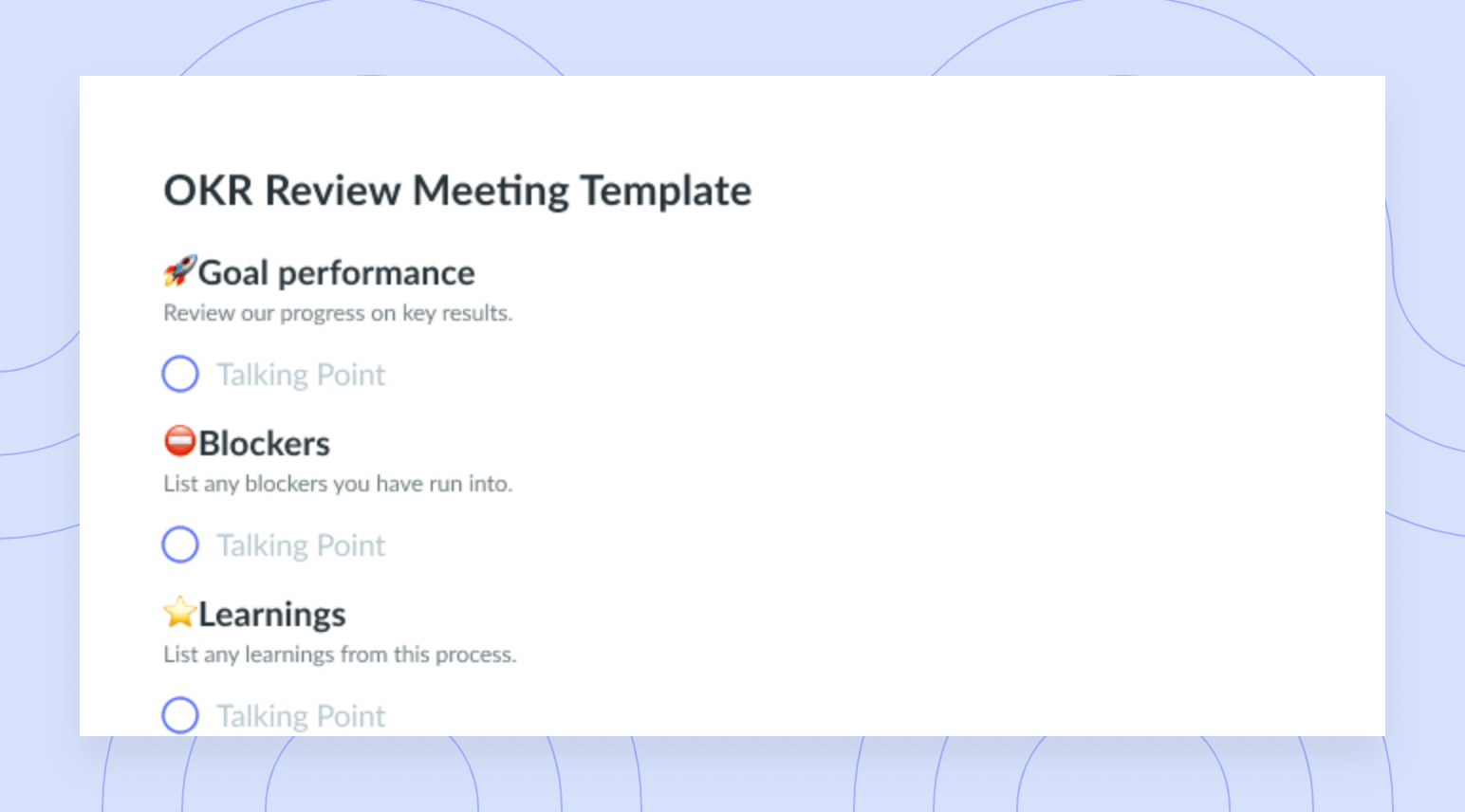
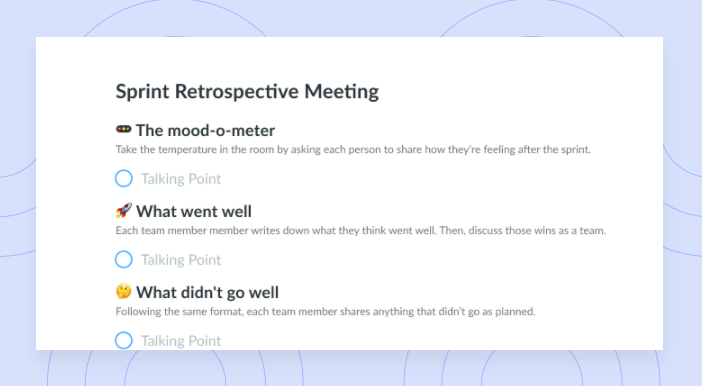
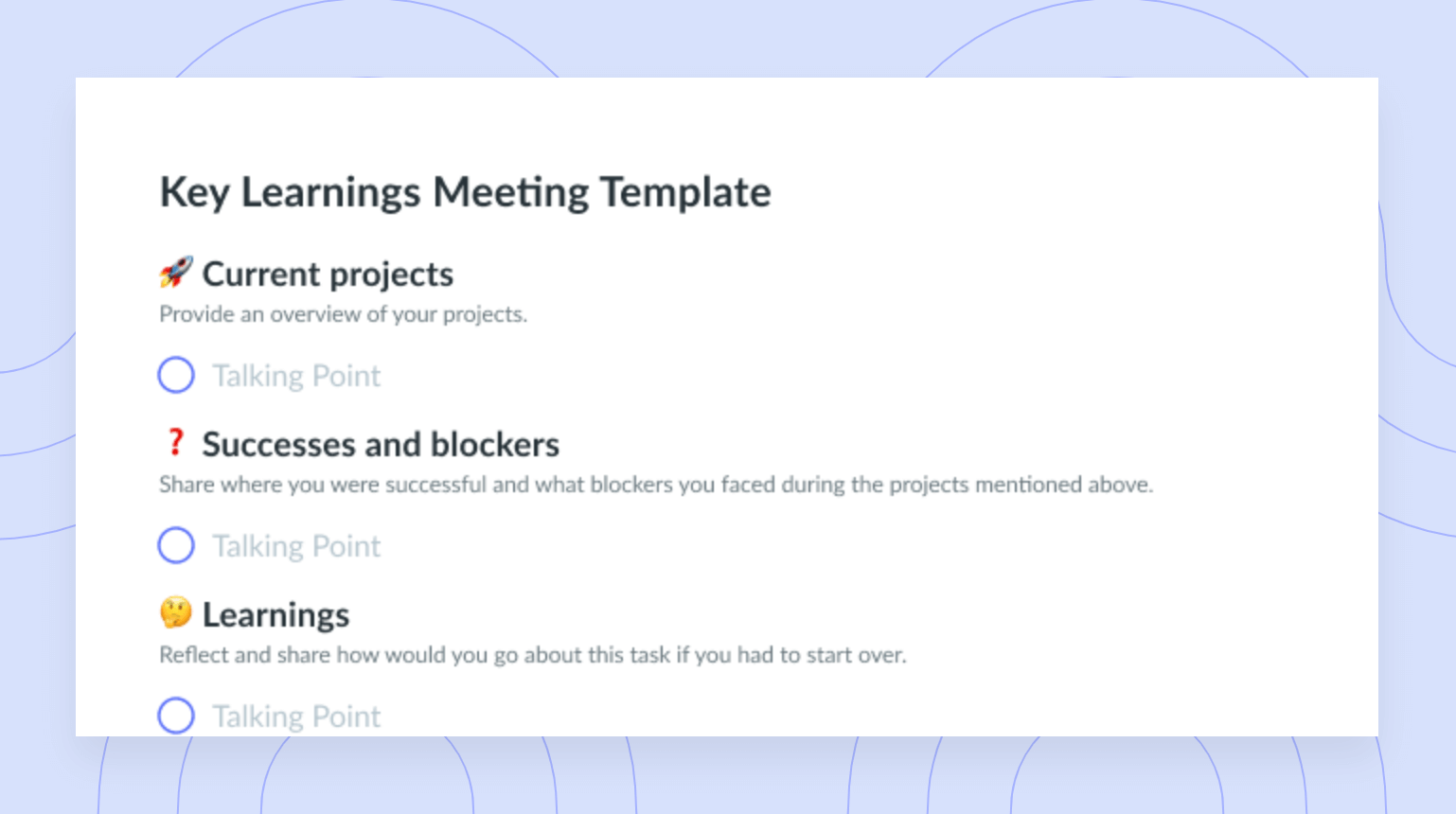
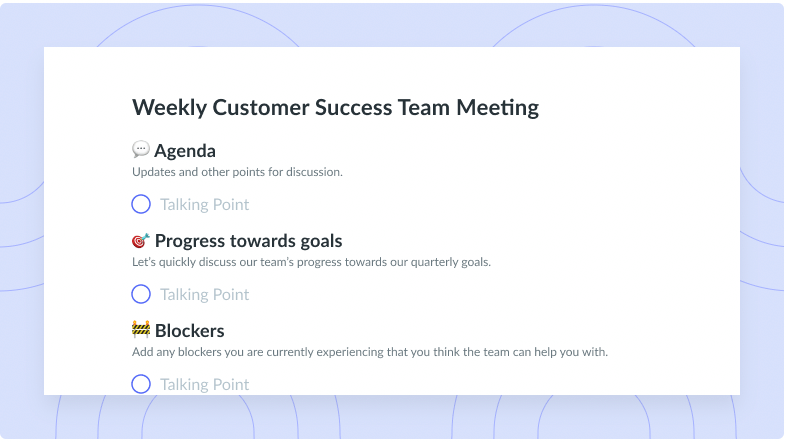
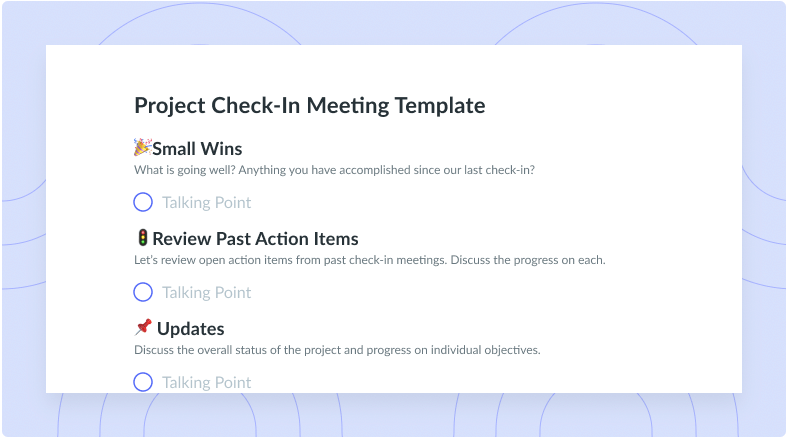
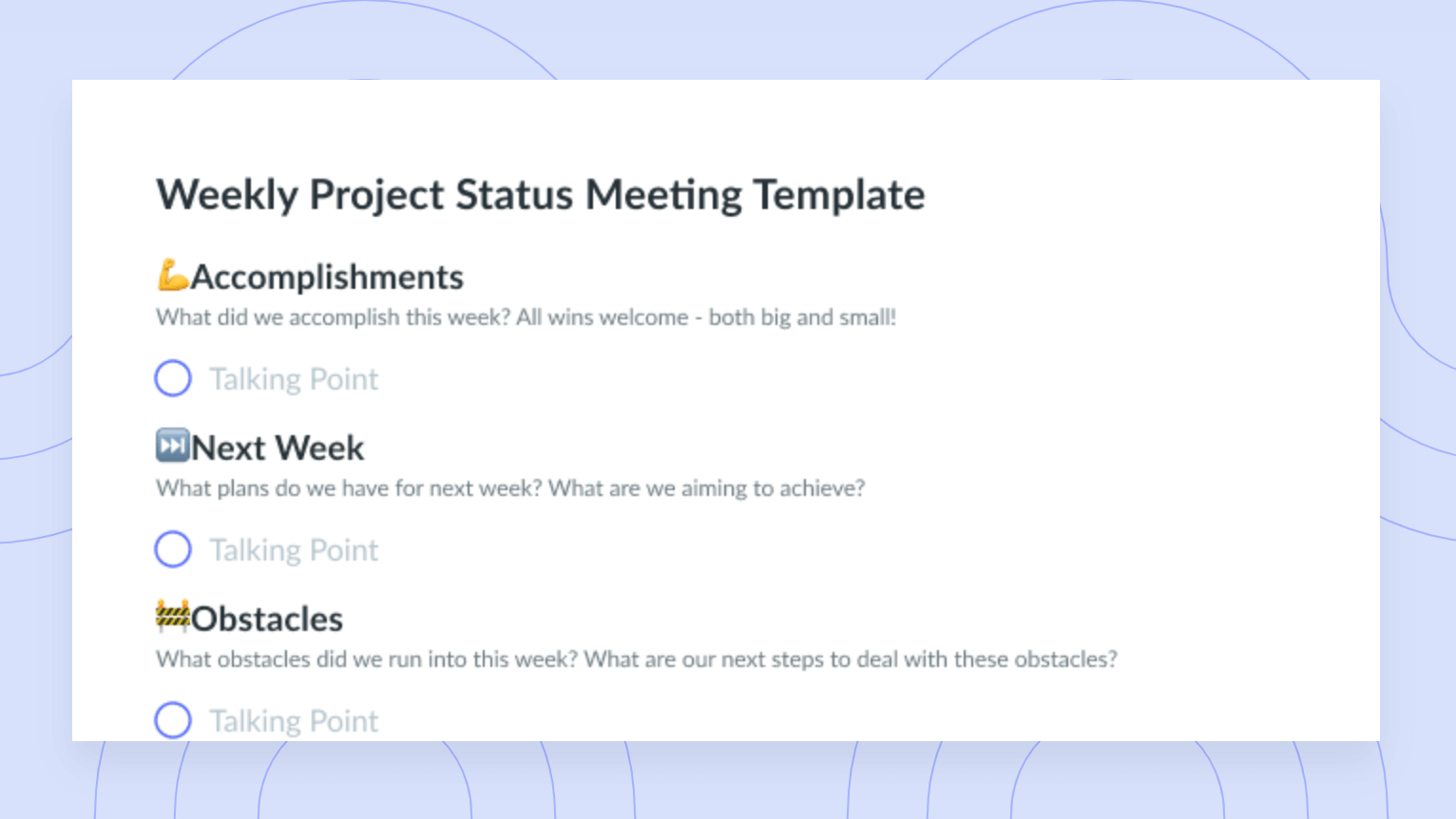
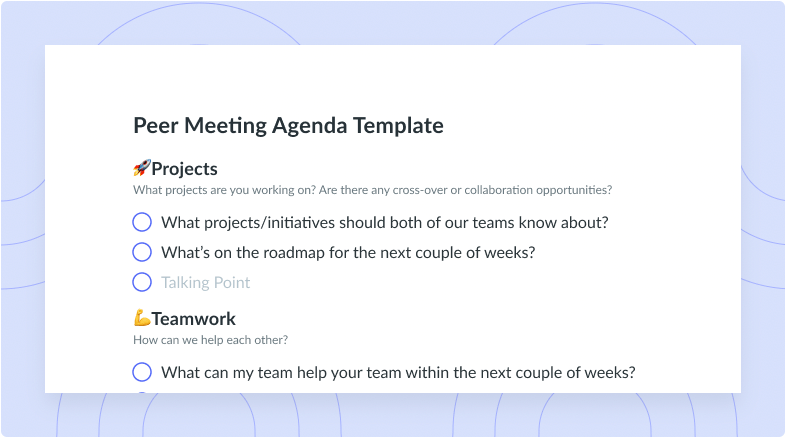
![What? So What? Now What? [Reflection Meeting] Template](https://fellow.app/wp-content/uploads/2021/08/What-So-What-Now-what-preview-v2.png)